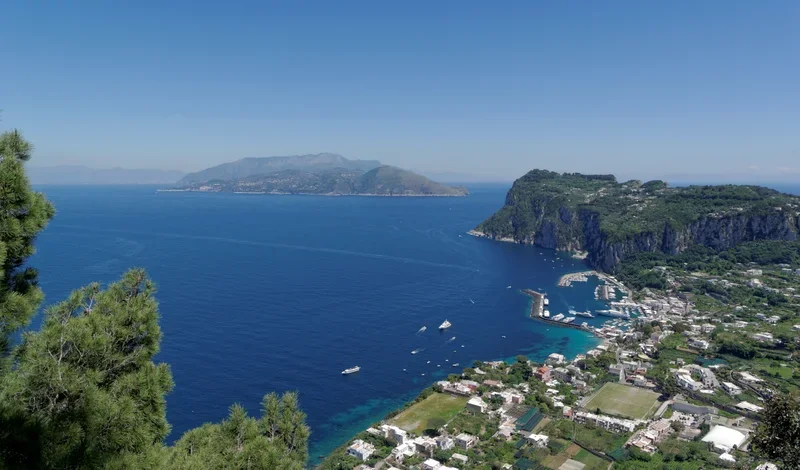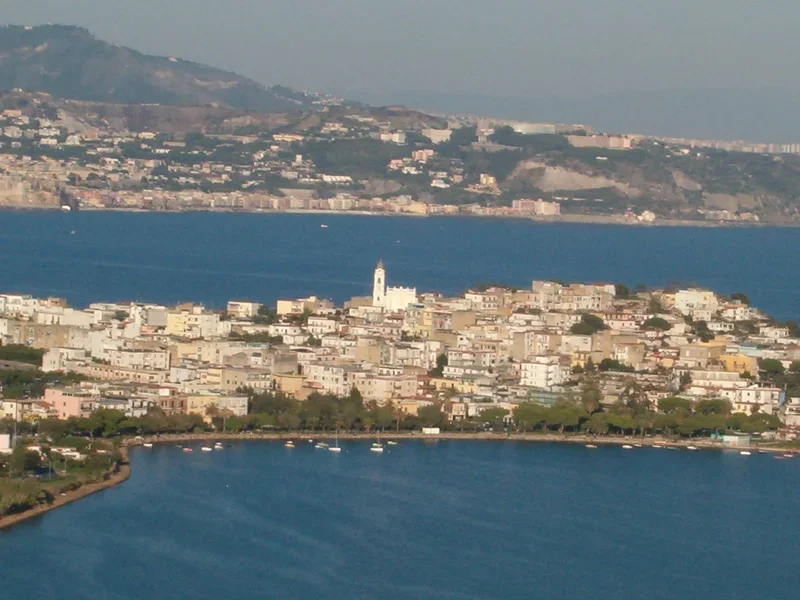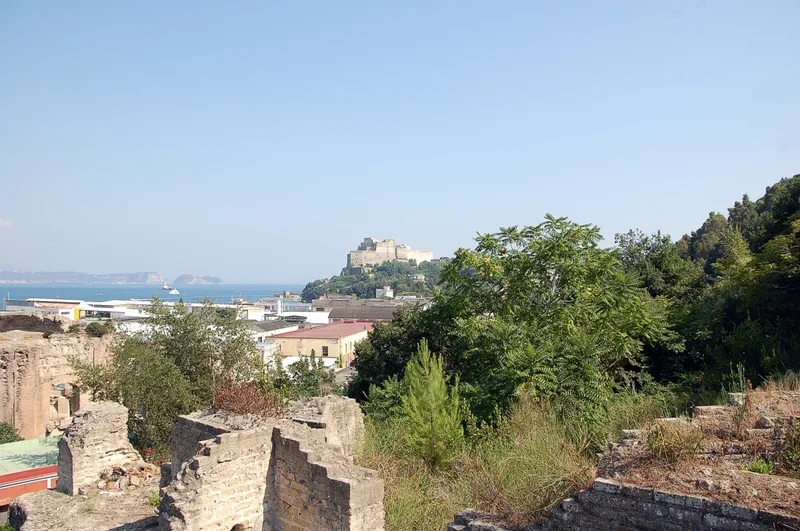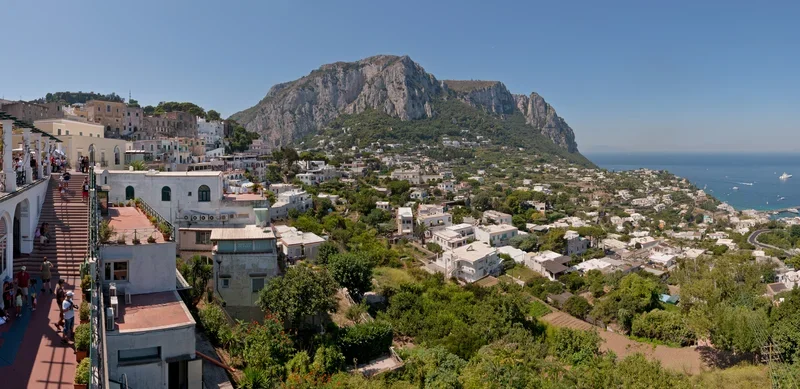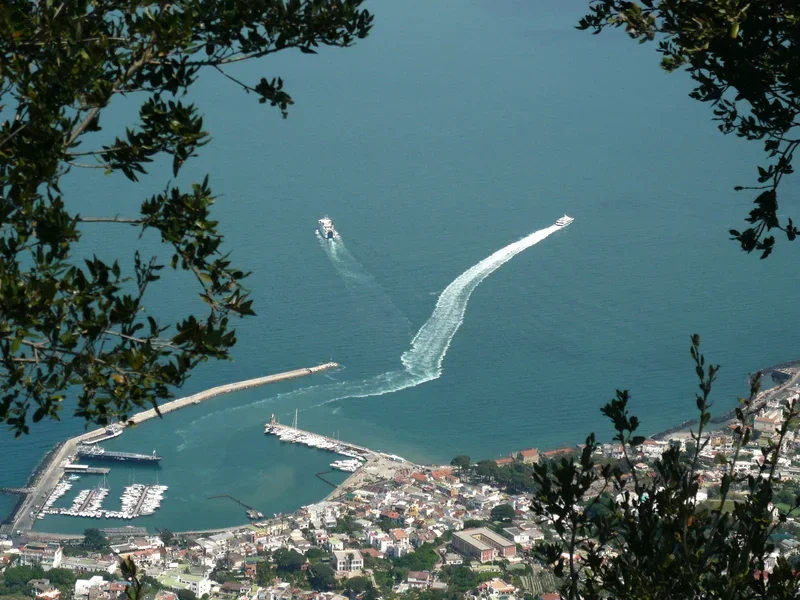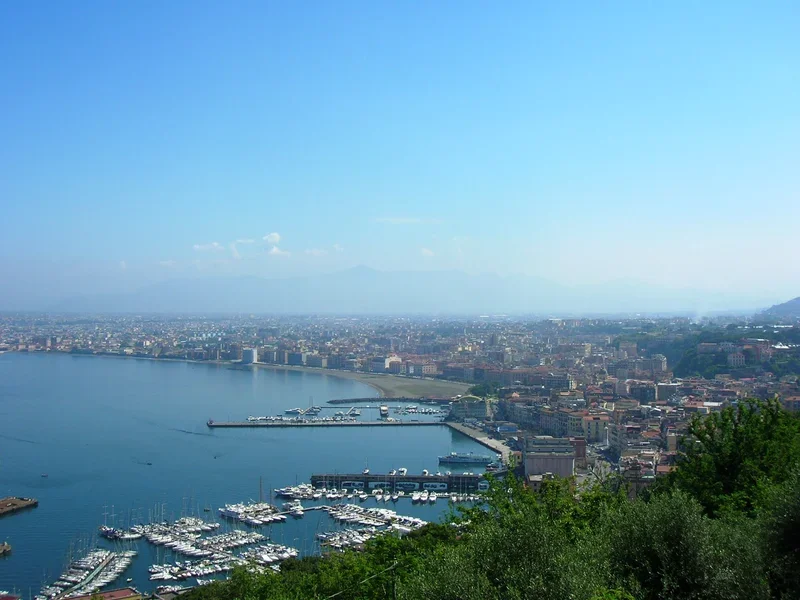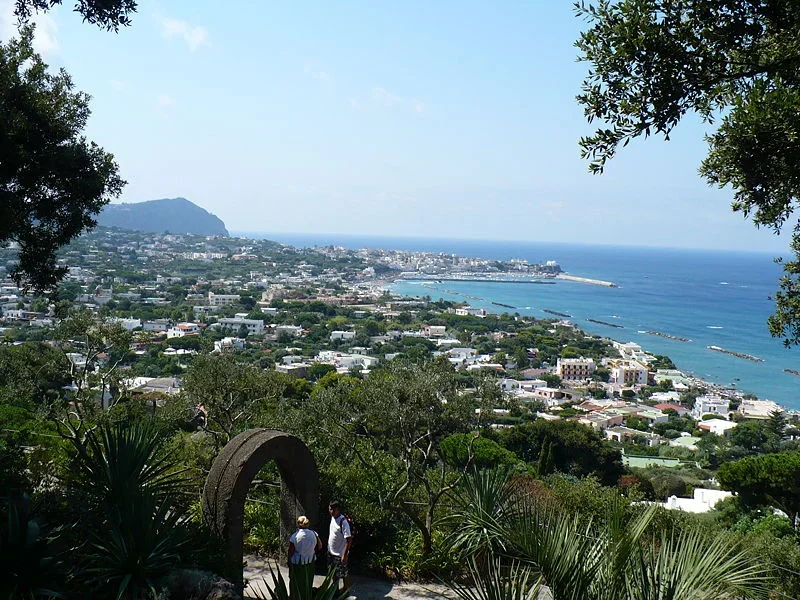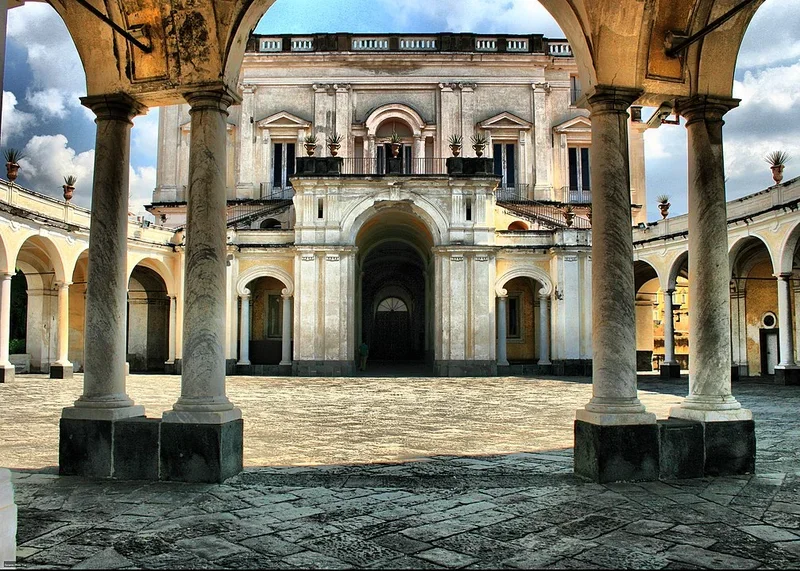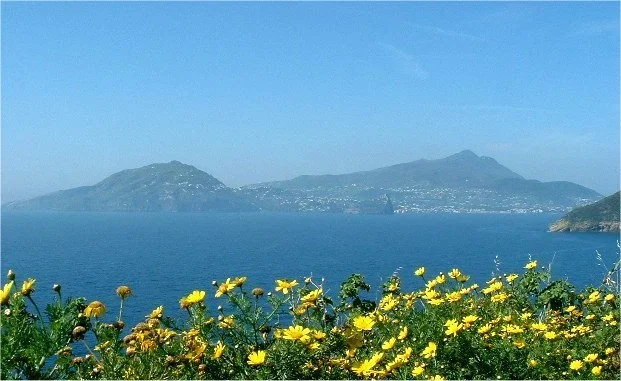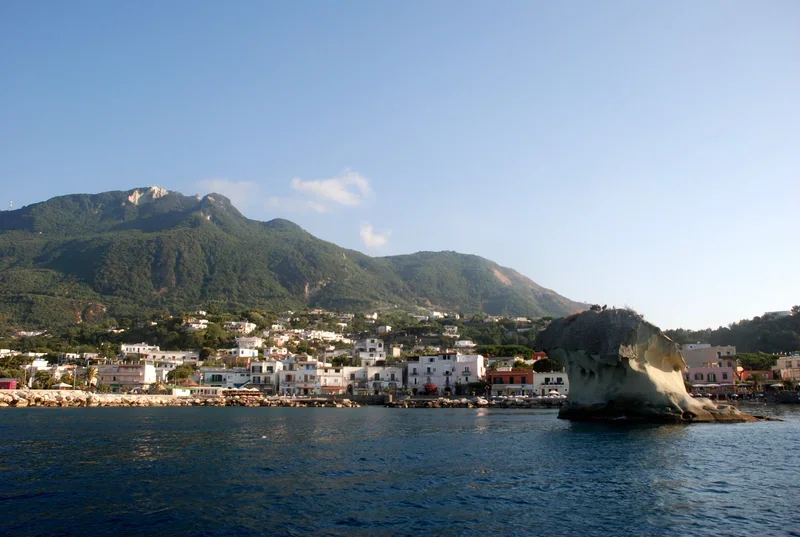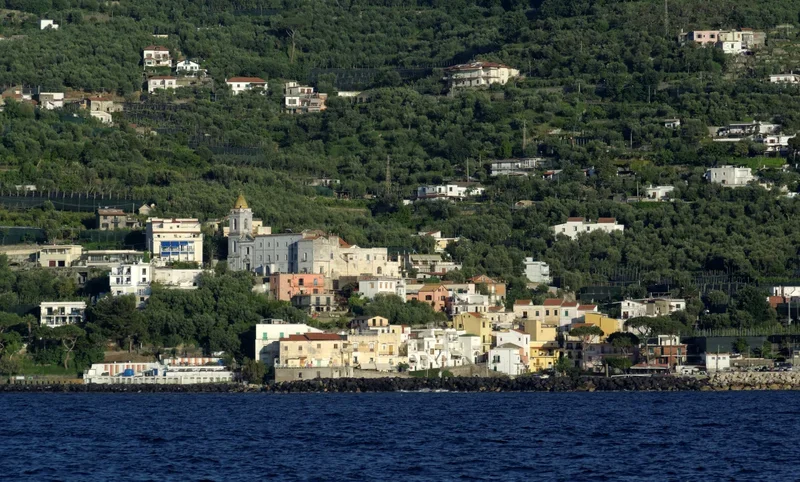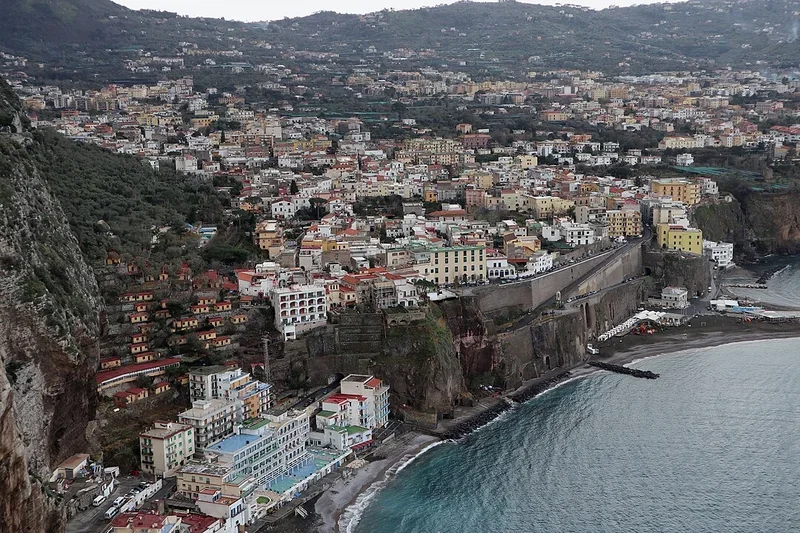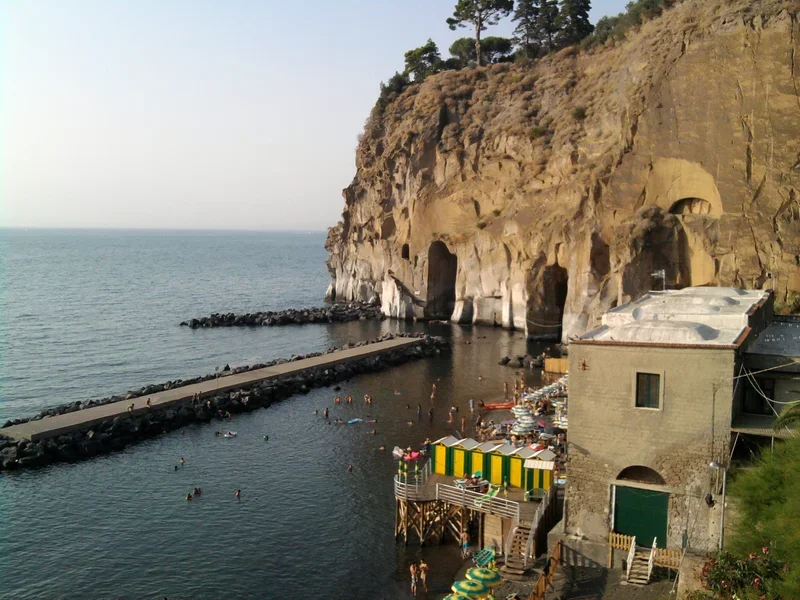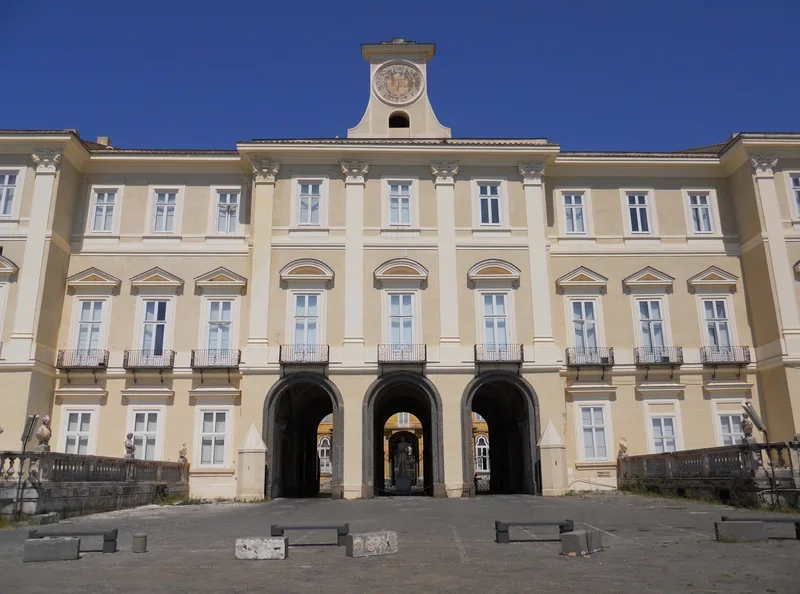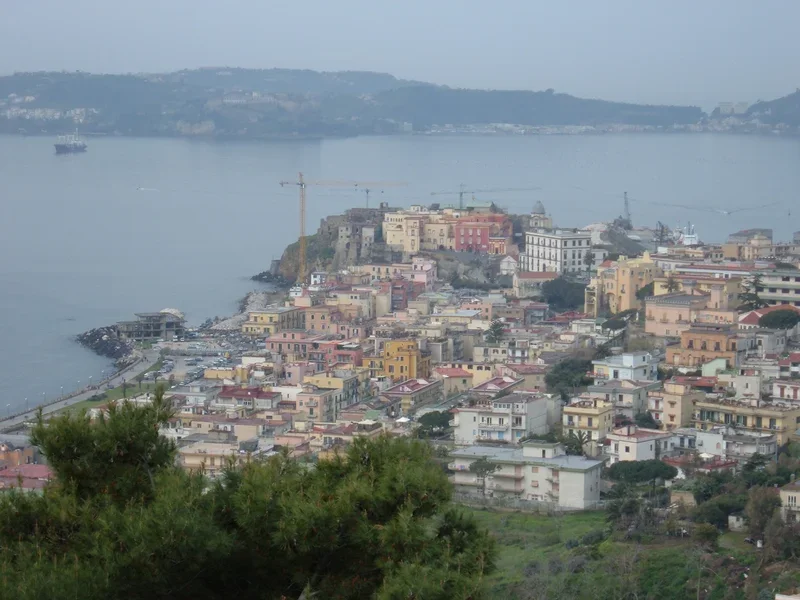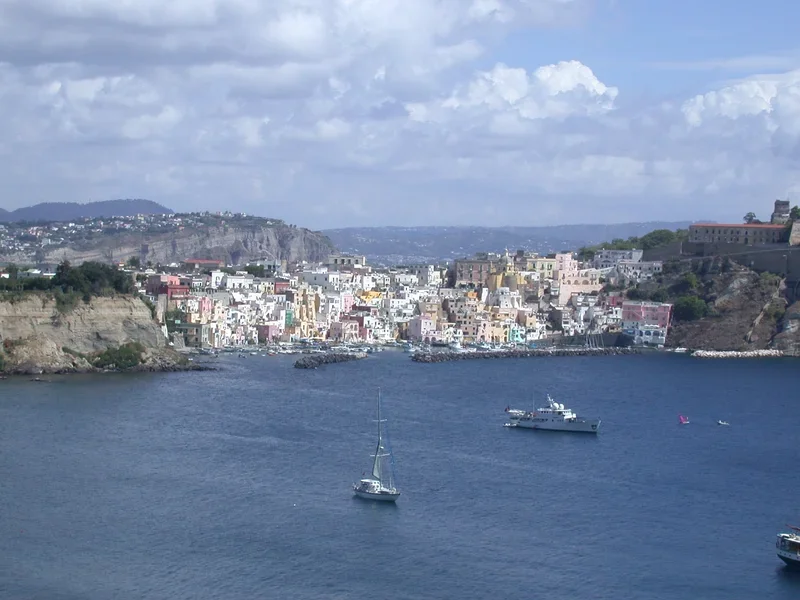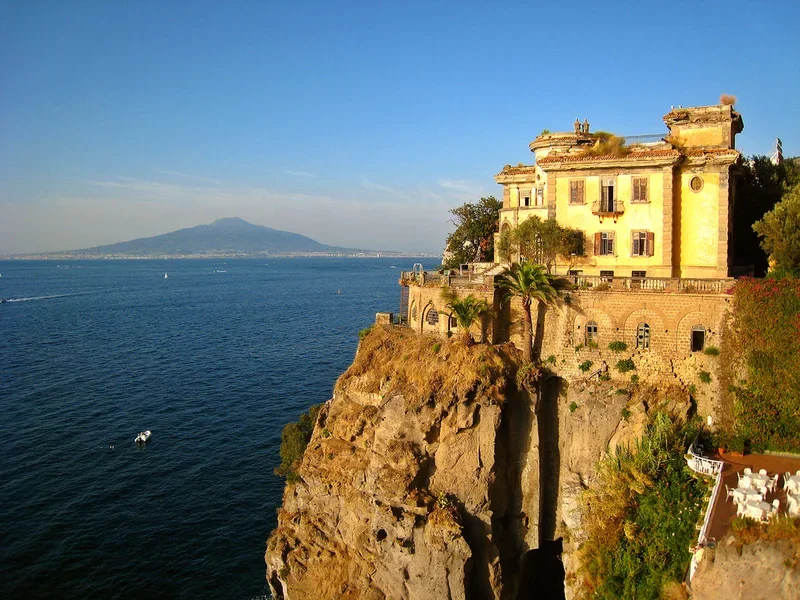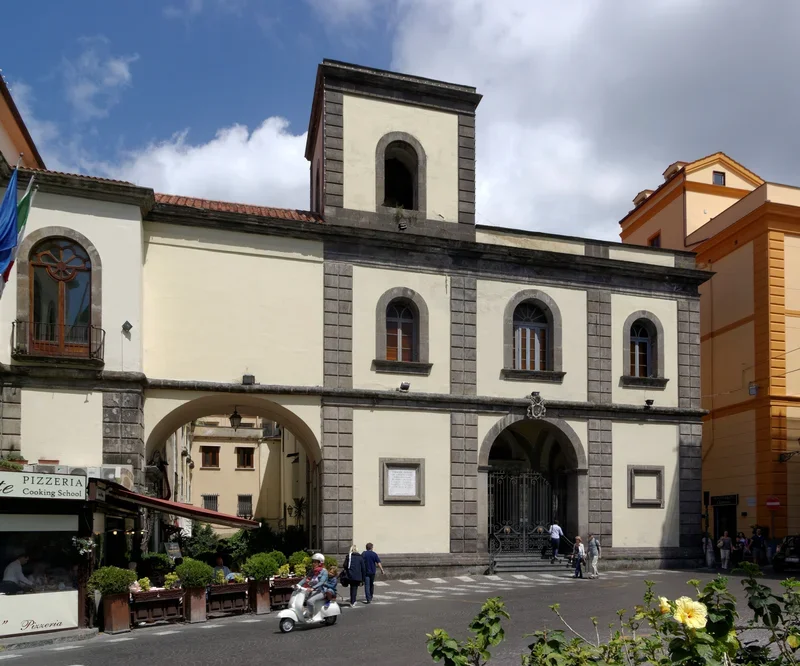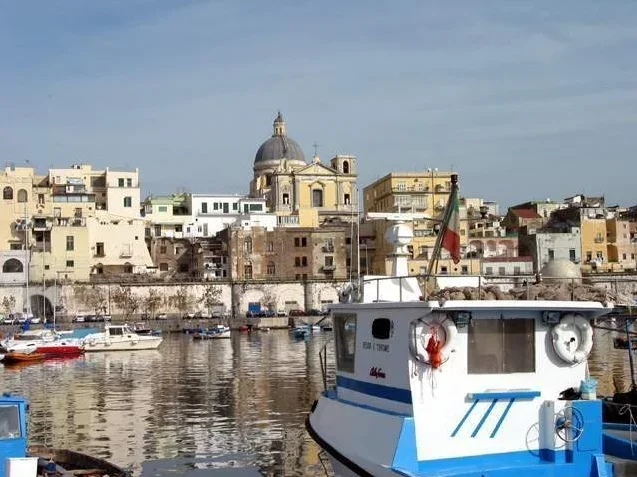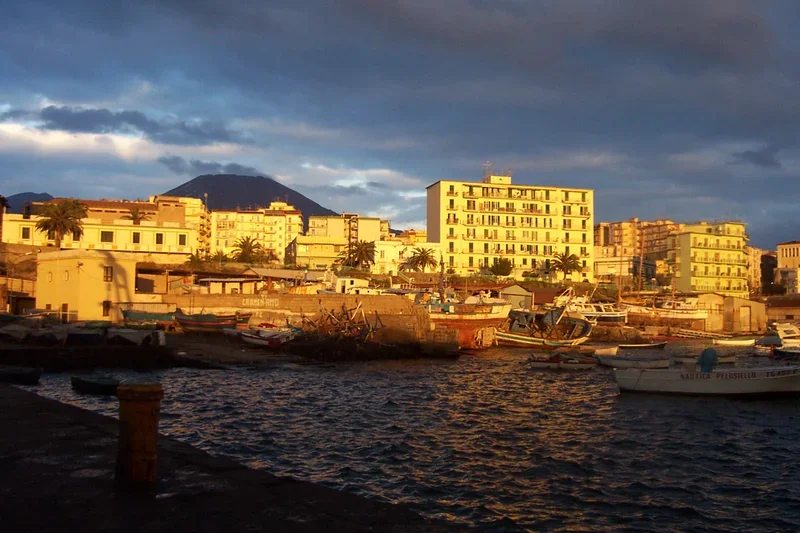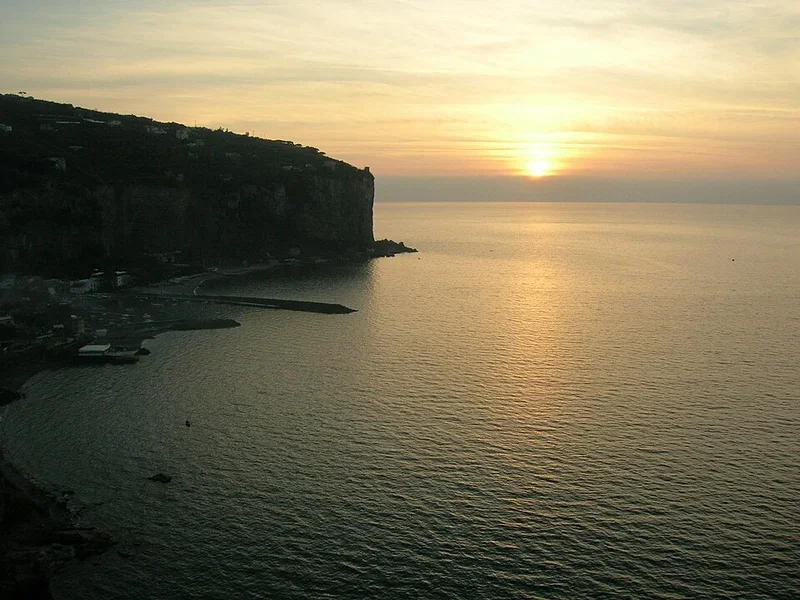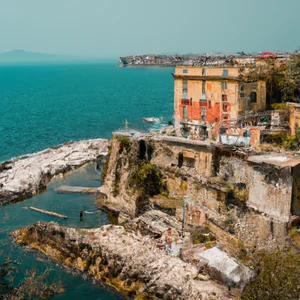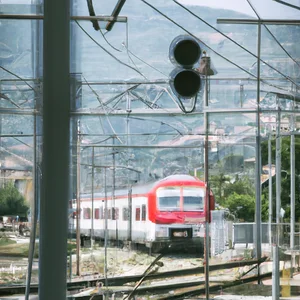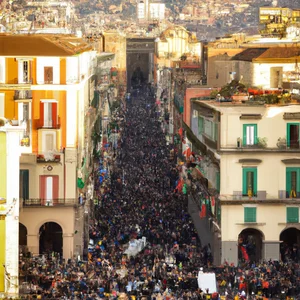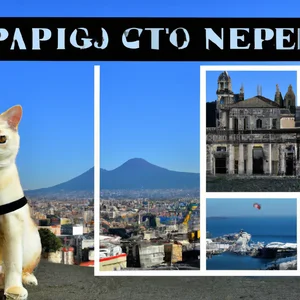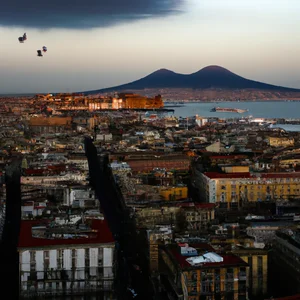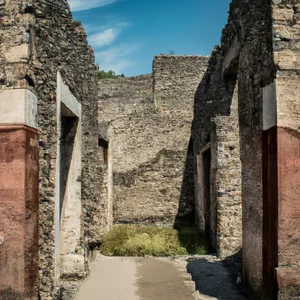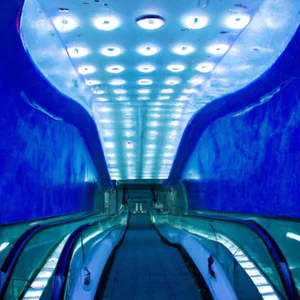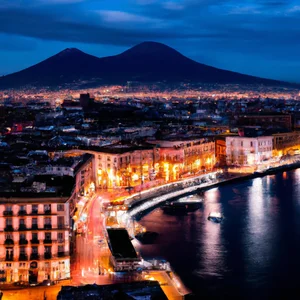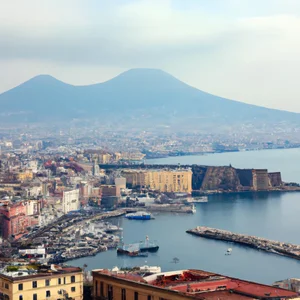Book your experience
Sant'Agnello
Sant’Agnello is one of the hidden gems of the Sorrento Coast, an enchanting corner that offers a perfect combination of natural beauty, history and culture. Located a few steps from lively Sorrento, this town stands out for its authentic charm and relaxed atmosphere, which make it an ideal destination for those who want to explore southern Italy without giving up tranquility. Our article aims to guide you through ten fundamental points that will allow you to discover everything that Sant’Agnello has to offer. We will start with an overview of its geographical position, highlighting how its proximity to iconic places on the Amalfi Coast makes it a strategic starting point for excursions and trips. We will then immerse ourselves in its history and culture, exploring the local traditions and artistic heritage that characterize this fascinating municipality.We will not fail to introduce you to the main attractions, from historical monuments to natural beauty, up to the splendid beaches that dot the coast. Local gastronomy, which recalls the authentic flavors of Campania, will be another central theme, with typical dishes not to be missed. Furthermore, we will tell you about the events and festivities that animate Sant’Agnello during the year, making each visit unique and unforgettable.Finally, we will provide useful information on outdoor activities, transport and accessibility, accommodation and accommodation, along with valuable advice for visitors. Whether it is a romantic getaway, a family holiday or an adventure with friends, Sant’Agnello will win your heart and give you unforgettable moments. So get ready to immerse yourself in a fascinating journey to discover this extraordinary destination.
Geographical position
Naples is located in southern Italy, along the western coast, overlooking the Gulf of Naples. It is located a few kilometers north of the famous Vesuvius volcano and east of the Amalfi Coast, one of the most beautiful and well-known locations in the world. The city is located approximately 225 km south of Rome and serves as an important hub between central and southern Italy. Its strategic position makes it a hub for tourism and commerce, facilitating connections with the islands of Capri, Ischia and Procida.
Naples is also characterized by a Mediterranean climate, with hot summers and mild winters, which makes it an attractive destination throughout the year. Its hills and panoramic sea views offer breathtaking scenery, further enriching the visitor experience.
History and Culture of Naples
Naples is a city rich in history and culture, with its roots in antiquity. Founded by the Greeks in the 7th century BC. with the name of Neapolis, the city has seen the passage of numerous peoples, from the Romans to the Byzantines, from the Normans to the Spanish, each of whom left an indelible mark.
The Origins
The origins of Naples date back to approximately 2,800 years ago, when the Greeks colonized the area, creating a city that prospered thanks to trade. In Roman times, Naples became an important cultural and tourist center, famous for its spas and villas, such as that of Lucius Licinius Lucullus.
The Middle Ages and the Renaissance
During the Middle Ages, Naples established itself as the capital of the Norman Kingdom and subsequently as the seat of the Aragonese Crown. This period saw considerable artistic and architectural development, with the construction of churches, castles and palaces. The Renaissance brought artists of the caliber of Caravaggio and Raphael to the city.
Cultural Heritage
Today, Naples is a UNESCO World Heritage Site thanks to its extraordinary architecture, its museums and its traditions. Emblematic places such as the National Archaeological Museum, the Duomo of Naples and the San Carlo Theater tell the story of a city that has been able to keep alive its cultural identity over the centuries.
Traditions and Folklore
Neapolitan culture is also characterized by popular traditions, such as the famous Neapolitan pizza and the nativity scene, which is a real art in Naples. Religious celebrations, such as the feast of San Gennaro, patron saint of the city, are events that unite the local community and attract visitors from all over the world.
Conclusion
In summary, the history and culture of Naples are a mosaic of different influences that intertwine to create a unique atmosphere. The city is a true treasure chest of historical and cultural treasures, which make it one of the most fascinating tourist destinations in Italy.
Main attractions of Naples
1. The National Archaeological Museum
The National Archaeological Museum of Naples is one of the most important archaeological museums in the world. It houses a vast collection of ancient Roman finds, including many from the excavations of Pompeii and Herculaneum. The rooms of the museum feature mosaics, frescoes and statues that offer an insight into the daily life of the ancient Romans.
2. The Cathedral of Naples
The Duomo of Naples, dedicated to San Gennaro, is an imposing Gothic cathedral that houses the treasure of the city’s patron saint. Every year, the miracle of San Gennaro, during which the saint’s blood liquefies, attracts thousands of faithful and curious people.
3. The Royal Palace
The Royal Palace of Naples is a historic residence of the kings of Naples and an extraordinary example of Baroque architecture. Visitors can explore the splendid rooms and gardens, admiring the furnishings and works of art that tell the story of the Neapolitan monarchy.
4. Castel Nuovo
Also known as Maschio Angioino, the Castel Nuovo is a symbol of Naples. This medieval castle, with its imposing architecture and towers, offers breathtaking views of the city and the gulf.
5. Spaccanapoli
Spaccanapoli is one of the most famous streets of Naples, which runs through the historic center and divides the city in two. Along this street you can find churches, artisan shops and restaurants, as well as a lively and authentic atmosphere.
6. The Chapel of San Severo
The Chapel of San Severo is famous for the Veiled Christ, a sculpture by Giuseppe Sanmartino which represents the body of Christ covered by a marble veil. This chapel is an example of Baroque art and a place of great spiritual charm.
7. The San Carlo Theater
The Teatro di San Carlo is the oldest opera house still in operation in the world. Its perfect acoustics and extraordinary architecture make it an unmissable place for music and entertainment lovers.
8. Vesuvius
Not far from the city, Vesuvius is an active volcano famous for its eruption in 79 AD. which destroyed Pompeii and Herculaneum. Visitors can hike up to the crater to enjoy spectacular views of the Bay of Naples.
9. Pompeii and Herculaneum
The ancient cities of Pompei and Herculaneum, easily reachable from Naples, are among the main tourist attractions of the region. The excavations offer a fascinating window into Roman life before the eruption of Vesuvius.
10. The seafront and Castel dell’Ovo
The Seafront of Naples is an ideal place for walking, with splendid views of the sea and Vesuvius. Castel dell’Ovo, located on the islet of Megaride, is the oldest castle in Naples and offers a romantic and historical atmosphere.
Beaches and Sea of Naples
Naples, overlooking the Tyrrhenian Sea, offers a variety of beaches and coastal areas that attract tourists and residents. The city is surrounded by a breathtaking maritime landscape, where the blue of the sea blends with the green of the hills and nearby islands.
Main beaches
The most famous beaches in Naples include:
- Posillipo: This residential area is known for its splendid villas and panoramic views of the sea. The beaches of Gaiola and Virgiliano are among the most popular, with clear waters and enchanting scenery.
- Chiaia: The beach of Bagno Elena is one of the busiest, with equipped services and a lively atmosphere. Here you can rent sunbeds and umbrellas.
- Posillipo: La Scala beach is another popular option, with its quiet and charming atmosphere.
- Island of Capri: Although not part of the city of Naples, Capri is easily accessible by ferry and offers splendid beaches such as Marina Piccola and Bagni di Tiberio .
Water activities
The crystal clear waters of Naples offer several opportunities for water activities, including:
- Swimming: The beaches are perfect for taking a refreshing dip, especially in the summer months.
- Snorkeling: Protected marine areas, such as the Gaiola Submerged Park, are ideal for exploring marine life.
- Sailing and kayaking: Several sailing schools and water sports centers offer courses and rentals to explore the coast from a different point of view.
Advice for visitors
When visiting the beaches of Naples, we recommend:
- Check the weather conditions and sea currents before diving.
- Bring sunscreen and skin protection with you, as the sun can be intense, especially in summer.
- Arrive early to secure a spot, as the beaches can fill up quickly, especially on weekends.
In summary, the beaches of Naples offer a perfect mix of natural beauty, relaxation and activities, making the city an ideal destination for those who love the sea.
Local gastronomy
The gastronomy of Naples is a real journey into Italian flavors and culinary traditions. This city is famous for its rich and varied cuisine, which reflects the history and culture of the region.
Neapolitan Pizza
The Neapolitan pizza is undoubtedly the most iconic dish of Naples. Characterized by a soft and thin dough, it is cooked in a wood oven and seasoned with fresh ingredients such as San Marzano tomatoes, buffalo mozzarella, basil and extra virgin olive oil. True Neapolitan pizza has been recognized as an intangible cultural heritage of humanity by UNESCO.
Pasta and Beans
Another traditional dish is pasta and beans, a rich and comforting soup prepared with beans, pasta and sautéed onion, tomato and spices. This dish is an excellent example of Neapolitan poor cuisine, which uses simple but tasty ingredients.
Typical desserts
We cannot talk about Neapolitan gastronomy without mentioning its typical desserts. Among these, the babà is one of the most famous. It is a dessert made from leavened dough soaked in rum, often served with cream or cream. Other famous desserts include sfogliatella, a pasta filled with ricotta and semolina, and pastiera, an Easter cake prepared with wheat, ricotta and herbs.
Markets and Restaurants
For an authentic gastronomic experience, visitors can explore local markets, such as the Porta Nolana Market, where fresh ingredients and regional specialties can be found. Furthermore, Naples offers a wide range of restaurants and pizzerias, from historic places to modern gourmet venues, where it is possible to taste traditional dishes and creative reinterpretations.
Wines and Drinks
The wine of Naples is another aspect not to be overlooked. The Campania region is famous for its wines, including Falanghina and Greco di Tufo, which pair perfectly with local dishes. Don’t forget to also taste limoncello, a lemon liqueur typical of the Amalfi Coast, often served as a digestive.
In summary, the gastronomy of Naples is an unmissable experience that celebrates authentic flavors and Italian culinary tradition. Visitors can explore a variety of dishes and desserts that tell the story and culture of this fascinating city.
Events and holidays in Naples
Naples is a city rich in traditions and celebrations that reflect its vibrant culture and history. Throughout the year, numerous events take place that attract both residents and tourists.
Religious Holidays
One of the most important holidays is the feast of San Gennaro, which is held on 19 September. This celebration is dedicated to the city’s patron saint and includes a solemn procession and the famous liquefaction of the saint’s blood, an event awaited with great fervor by Neapolitans.
Cultural and Musical Events
Naples hosts various cultural festivals throughout the year, including the Napoli Teatro Festival, which celebrates theater and the performing arts with shows taking place in several iconic locations in the city. Furthermore, the Naples Jazz Festival attracts musicians and jazz enthusiasts from all over the world.
Popular Festivals
Another significant event is the Piedigrotta festival, which takes place in September and celebrates the Madonna of Piedigrotta with processions, concerts and fireworks shows. This party is characterized by a festive and engaging atmosphere, typical of Neapolitan culture.
Markets and Fairs
During the Christmas period, the Christmas markets in Naples are a must. The most famous are found in Via San Gregorio Armeno, where local artisans display nativity scenes and Christmas decorations. The Porta Nolana market offers an authentic experience with typical products and local craftsmanship.
Sporting Events
For sports enthusiasts, Naples also hosts major sporting events, such as SSC Napoli football matches, which instill a strong sense of community and passion among fans.
In conclusion, visiting Naples during its holidays and events means immersing yourself in a vibrant culture and centuries-old tradition, offering visitors memorable and unique experiences.
Outdoor activities in Naples
Naples, with its privileged position between sea and mountains, offers a wide range of outdoor activities that allow you to explore the natural beauty and cultural heritage of the city and its surroundings.
Excursions
One of the most popular activities is hiking. Visitors can venture onto Vesuvius, the famous volcano that dominates the panorama, with paths leading up to the crater. The excursions offer not only an adventurous experience, but also spectacular panoramic views of the city and the Gulf of Naples.
Visits to parks and gardens
Naples is also rich in parks and gardens. One of the best known is the Parco Virgiliano, located on the Posillipo hill, which offers breathtaking views and walking paths. Other parks, such as Parco della Floridiana, are excellent for relaxing and enjoying nature.
Water sports
For sea lovers, Naples offers various opportunities to practice water sports. It is possible to go swimming, sailing, kayak and even snorkeling in the crystal clear waters of the islands of Capri and Ischia, easily reachable by ferries.
Bike tour
Another way to explore Naples is by bicycle. There are cycle routes along the coast and through the parks, which allow you to discover the city from a different perspective. Several companies offer bike rental and guided tours.
Outdoor cultural activities
Additionally, during the summer, Naples hosts numerous outdoor cultural events, including concerts, theater performances and festivals. These events are often held in historic squares and parks, offering the opportunity to experience Neapolitan culture in a unique atmosphere.
In summary, Naples offers a wide variety of outdoor activities that meet the needs of everyone, from adventurers to culture and nature lovers. Don’t forget to bring comfortable shoes with you and enjoy every corner of this wonderful city!
Transport and accessibility
Naples is a well-connected city, both nationally and internationally, making it easily accessible for visitors. Here is an overview of the main means of transport available:
Air transport
The Naples-Capodichino Airport is the main airport in the city, located about 7 km from the centre. It offers national and international flights, with direct connections to numerous European cities. From the airport, visitors can reach the city center via:
- Bus: The Alibus service connects the airport with the central station and the port.
- Taxis: Authorized taxis are available at the airport exit.
- Car rental: Several car rental companies operate at the airport.
Rail transport
The Naples Central Station is an important railway hub, with high-speed connections to cities such as Rome, Milan and Florence. Furthermore, it offers regional services that allow you to explore Campania and the surrounding regions. The station is well connected via:
- Metro: Metro line 1 connects the station to other important areas of the city.
- Buses and trams: Several bus and tram lines stop near the central station.
Public transport
The public transport system in Naples is made up of metro, buses and funiculars. The public transport network is managed by the ANM (Azienda Neapolitan Mobility) and offers various lines that cover the entire city. Visitors can purchase single tickets or passes for unlimited travel. Some key points include:
- Metro: Line 1 connects the center with Vomero and Fuorigrotta.
- Funiculars: Three funiculars (Chiaia, Montesanto and Mergellina) offer easy access to the hilly areas of the city.
- Bus: Various lines cover the peripheral areas and historic districts.
Accessibility
Naples is making progress to improve accessibility to its means of transport. Many subway stations and public transport are equipped with lifts and ramps to facilitate access for people with reduced mobility. However, some areas of the city, particularly historic ones, can present challenges due to narrow streets and uneven pavement.
Useful tips
To move around Naples easily, we recommend:
- Download a local public transport app to plan your trips.
- Purchase a Napoli Card which offers access to public transport and discounts on attractions and museums.
- Be prepared to walk, as many of the main attractions are within walking distance of each other.
Accommodations and accommodation in Naples
Naples offers a wide range of accommodation options to meet the needs of every type of traveller. From the luxurious hospitality of five-star hotels, to welcoming family-run structures, up to apartments and hostels for those looking for more economical solutions, the possibilities are many.
Luxury Hotel
For those who want a high-class experience, Naples has several luxury hotels. These hotels not only offer elegant rooms and high-quality services, but often also boast panoramic positions over the Gulf of Naples. Some of the most popular hotels include:
- Grand Hotel Vesuvio – Located on the seafront, it offers spectacular views and gourmet restaurants.
- Romeo Hotel – With a modern design and a luxury spa, it is a great choice for those seeking comfort.
- Palazzo Alabardieri – A charming hotel in the heart of the Chiaia district, with a historic atmosphere.
Hostels and Economic Structures
For travelers on a budget, Naples also offers numerous hostels and bed & breakfasts. These facilities are often located in central areas and offer a convivial atmosphere. Here are some options:
- Hostel of the Sun – A hostel popular with backpackers, with shared rooms and a friendly atmosphere.
- Charming International Hotel – A bed & breakfast that offers clean and welcoming rooms at competitive prices.
- La Controra Hostel – Located in an ancient villa, this hostel combines history and modernity.
Apartments and Short-Term Rentals
Another popular option for visitors is apartment rental. Platforms like Airbnb and Vrbo offer a large selection of apartments, allowing tourists to live like a local. The apartments can range from studios to larger accommodations, ideal for families or groups of friends.
Advice for Choosing Accommodation
When choosing where to stay in Naples, it’s important to consider location, especially if you want to explore on foot. The more central areas such as the Centro Storico, Chiaia and Vomero are excellent due to their proximity to the main attractions. Furthermore, it is advisable to book in advance, especially during the high tourist season, to guarantee the best rates and availability.
In conclusion, Naples offers a variety of accommodation options that can meet the needs of every traveler, making the visit to the city even more pleasant and memorable.
Advice for visitors
Naples is a city rich in history, culture and traditions, but it also has some peculiarities that visitors should keep in mind to fully enjoy their experience. Here are some useful tips:
1. Security
As in many large cities, it is important to pay attention to your belongings. Avoid poorly lit areas at night and watch out for pickpockets, especially in crowded places and on public transport.
2. Transport
Use public transport to get around the city. The underground, trams and buses are well connected and will allow you to visit the main attractions without problems. Consider purchasing a day ticket if you plan to use public transport frequently.
3. Language
Neapolitan is the local language, but Italian is widely spoken. Don’t hesitate to ask for information in Italian; the inhabitants of Naples are generally very welcoming and willing to help you.
4. Clothing
Wear comfortable shoes, as Naples is a city best explored on foot, with many cobbled streets and hills. In summer, bring a hat and sunscreen, while in winter a good raincoat is recommended.
5. Respect for traditions
Naples is a city with strong cultural and religious traditions. Respect places of worship and local holidays. For example, during the Christmas period, don’t miss the opportunity to visit the handcrafted nativity scenes in San Gregorio Armeno.
6. Gastronomy
Don’t leave without tasting the Neapolitan pizza, considered the best in the world. Also, try local desserts such as sfogliatella and babà. Look out for restaurants and eateries frequented by locals for an authentic dining experience.
7. Planning
Spend time planning your visits. Some museums and attractions may require advance reservations, especially during peak tourist season. Check the opening hours and consider purchasing tickets online.
8. Discover the surroundings
If you have time, explore the surroundings of Naples. Places such as Pompei, Herculaneum and the Amalfi Coast are easily reachable and offer unforgettable experiences.
9. Stay hydrated
During hot summer days, make sure you stay hydrated. Always carry a bottle of water with you and take advantage of the numerous fountains scattered around the city.
10. Enjoy the atmosphere
Finally, take time to simply enjoy the atmosphere of Naples. Sit in a café, watch life go by, and get involved in the lively Neapolitan culture.

